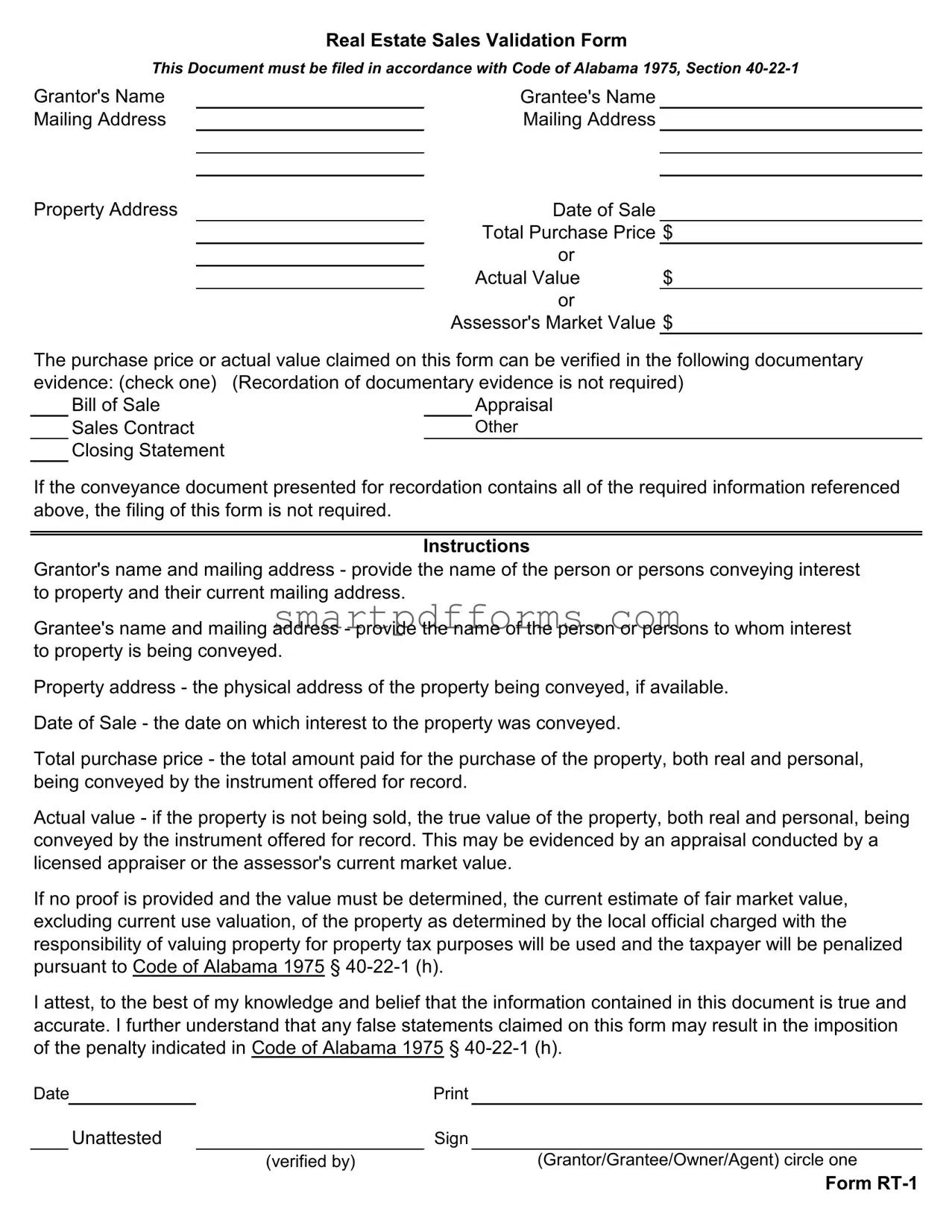- What is the Alabama Rt 1 form?
The Alabama Rt 1 form, also known as the Real Estate Sales Validation Form, is a document that must be filed to record a real estate transaction in the state of Alabama. It provides details about the sale, including the grantor's and grantee's information, property address, date of sale, and total purchase price or the property's actual value. This form helps in maintaining accurate public records of property transactions.
- When do I need to file the Alabama Rt 1 form?
You need to file the Alabama Rt 1 form anytime you are involved in a real estate transaction, whether buying or selling property, and the conveyance document does not contain all the required information. If the conveyance document, such as a deed, includes all necessary details about the transaction, filing this form may not be required.
- What information do I need to provide on the Alabama Rt 1 form?
The form requires specific information, including:
- The names and mailing addresses of both the grantor (seller) and the grantee (buyer).
- The physical address of the property being conveyed.
- The date of the sale.
- The total purchase price, actual value, or assessor's market value of the property.
You must also attest to the accuracy of the information provided and may need to include documentary evidence such as a bill of sale, appraisal, sales contract, or closing statement.
- How can the purchase price or actual value be verified?
The form allows you to verify the purchase price or actual value through documentary evidence. This can include a bill of sale, an appraisal by a licensed appraiser, a sales contract, a closing statement, or other relevant documents. Although the recordation of this documentary evidence is not required, it should be available if requested to substantiate the values claimed.
- What happens if the conveyance document already contains the required information?
If the conveyance document presented for recordation, such as a deed or title, includes all the required information that the Alabama Rt 1 form asks for, then filing the Rt 1 form is not necessary. This provision ensures efficiency and avoids redundancy in the recording process.
- What are the consequences of providing false statements on the form?
Providing false statements on the Alabama Rt 1 form can lead to penalties as indicated in Code of Alabama 1975 § 40-22-1 (h). This underscores the importance of ensuring that all the information provided on the form is true and accurate to the best of your knowledge and belief.
- Is it mandatory to have the form attested or verified?
Yes, the bottom part of the form requires attestation or verification by the grantor, grantee, owner, or their agent, highlighting the responsibility to ensure the information's accuracy. This serves as a formal declaration of the truthfulness and accuracy of the information provided on the form.
- Can the value of the property be determined by the local official if no proof is provided?
If no proof of the property's value is provided, the current estimate of the fair market value, excluding current use valuation, as determined by the local official responsible for valuing property for property tax purposes, will be used. This determination may result in penalties if it is found that the value declared is inaccurate.
- Where can I find the Alabama Rt 1 form?
The Alabama Rt 1 form is typically available through the county's office where the property is located or on their official website. It's important to obtain the most current version of the form to ensure compliance with the latest requirements and guidelines.

